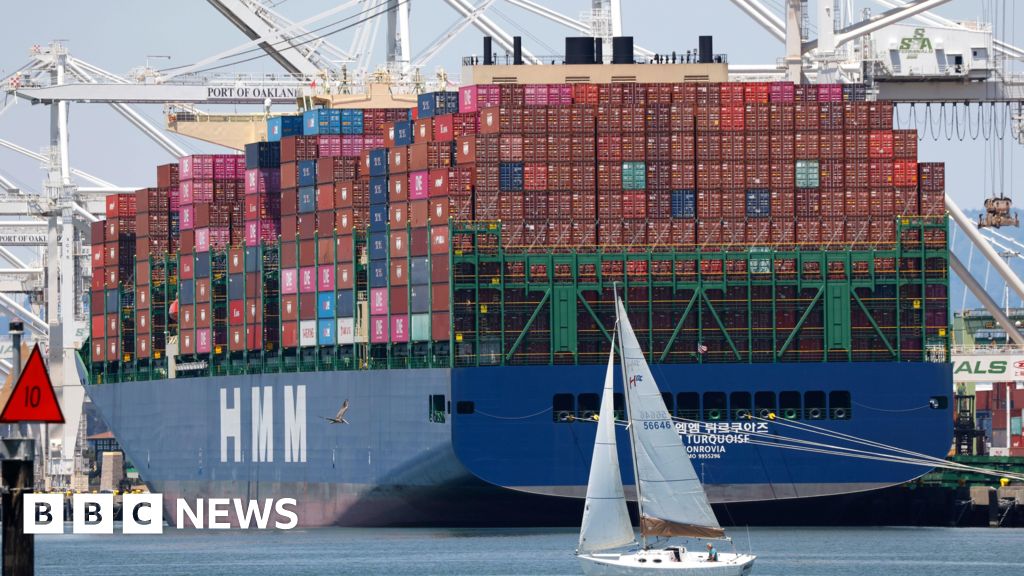
Trump raises Canada trade tariff to 35%
How did your country report this? Share your view in the comments.
Diverging Reports Breakdown
Trump raises Canada trade tariff to 35%
Trump raises Canada trade tariff to 35% from 25% in executive order. Trump said Canada had “failed to cooperate” in curbing the flow of fentanyl and other drugs across the US border. The president also announced sweeping tariffs on dozens of countries on Thursday. Most goods coming into the US facing new taxes of between 10% and 50%. Few nations have been spared in the latest list of tariff rates. Even small economies like Vanuatu and Papua New Guinea in the Asia-Pacific region were issued 15% duties. Economists and financial analysts have warned that the new levies will raise prices for businesses and consumers in the US.
35 minutes ago Share Save Natalie Sherman BBC News, New York Jake Lapham BBC News, Washington DC Share Save
EPA
US President Donald Trump has raised the tariff on Canada to 35%, escalating a trade war with one of Washington’s key economic partners. The decision, contained in an executive order, increases the rate from 25% and will come into effect at 00:01 US East Coast time (05:01 BST) on 1 August. Trump said Canada had “failed to cooperate” in curbing the flow of fentanyl and other drugs across the US border, something Prime Minister Mark Carney insisted earlier this month his country was making “vital progress” towards. The president also announced sweeping tariffs on dozens of countries on Thursday, as he continued his drive to remake how global trade operates.
As the clock ticked towards Trump’s deadline to strike trade deals, he announced goods from Mexico would be charged at current rates for another 90 days, avoiding a threatened increase to 35%. However senior White House officials said their Canadian counterparts were less constructive in negotiations than Mexico, prompting the 35% tariff on Ottawa. While that levy remained due to come into effect from midnight US East Coast time on Friday, countries affected by the so-called “reciprocal” tariffs would have seven days before they kick in. Goods that are loaded onto ships by 7 August and those that are already in transit will also not be affected by the rates if they reach the US before 5 October. Published by the White House, the orders leave most goods coming into the US facing new taxes of between 10% and 50%. Few nations have been spared in the latest list of tariff rates. Even small economies like Vanuatu and Papua New Guinea in the Asia-Pacific region were issued 15% duties. Countries not mentioned on the list face baseline duties of 10%.
The tariffs, which are a tax on imports, hit Asian countries hard. Two major trading partners in the region – India and Taiwan – were hit with levies of 25% and 20% respectively. Taiwan’s President Lai Ching-te said the levy was only “temporary”, vowing to complete talks with Washington for a deal. And land-locked South East Asian nation Laos is facing the second-highest rate in this round of tariffs. At 40% it sits just behind Syria’s unenviable 41%. A day earlier, Trump reached a deal with South Korea, imposing a 15% tariff on its imports in return for investment in the US and other concessions. Economists and financial analysts have warned that the new levies will raise prices for businesses and consumers in the US and weigh on the economy, predictions that the Trump administration has dismissed. White House press secretary Karoline Leavitt told reporters on Thursday that Trump was “proving the so-called economic experts wrong at every turn”. “What we are watching is President Trump rebuilding the greatest economy in the history of the world,” she said.
Follow BBC’s coverage of US tariffs
Getty Images Protests against Trump’s tariffs took place in South Korea this week
Source: https://www.bbc.com/news/articles/c8deqejdrmro
